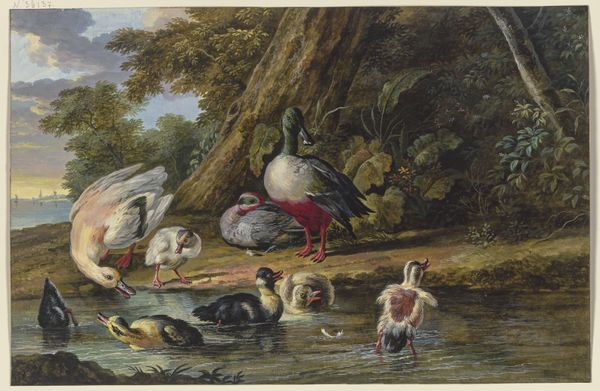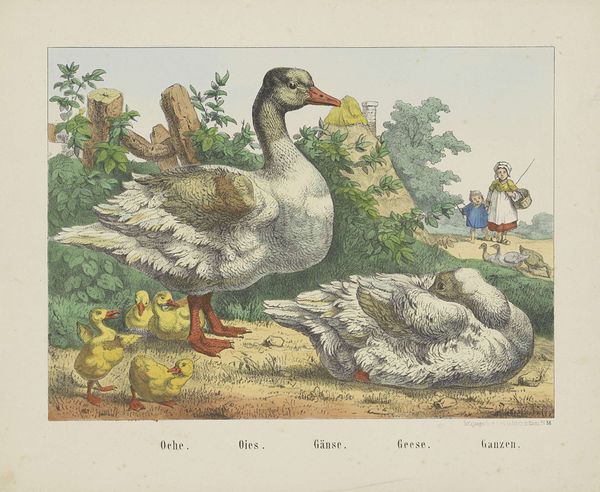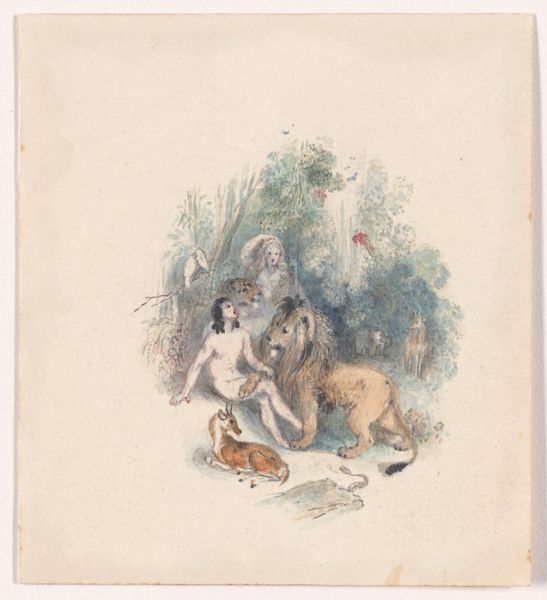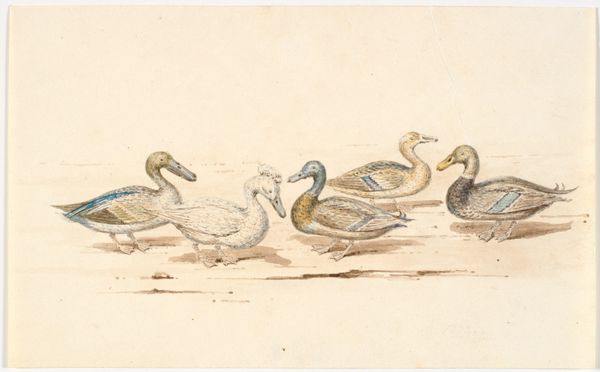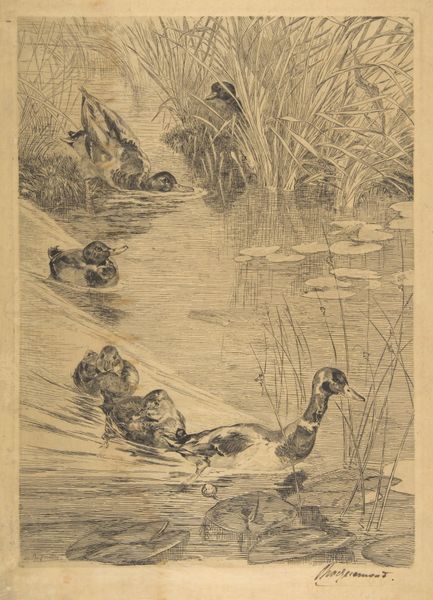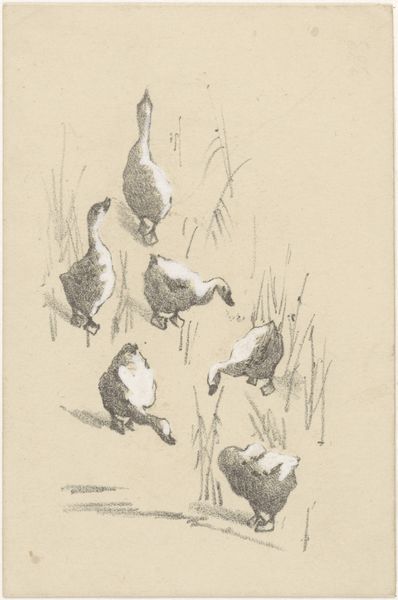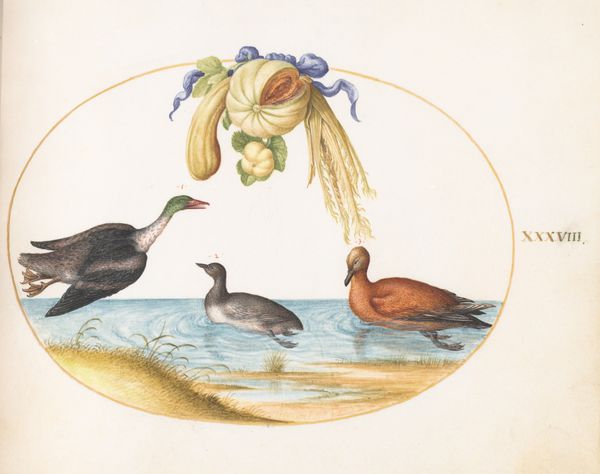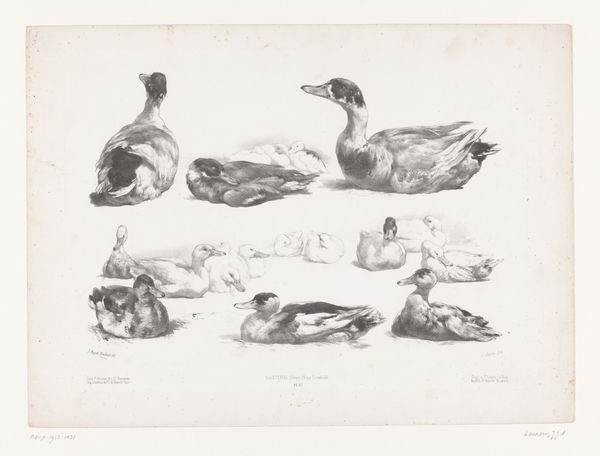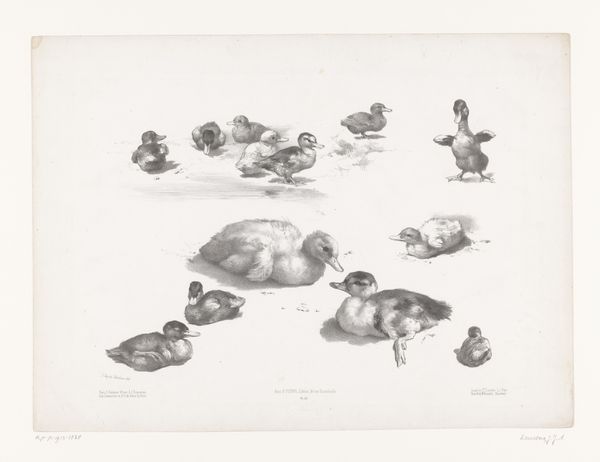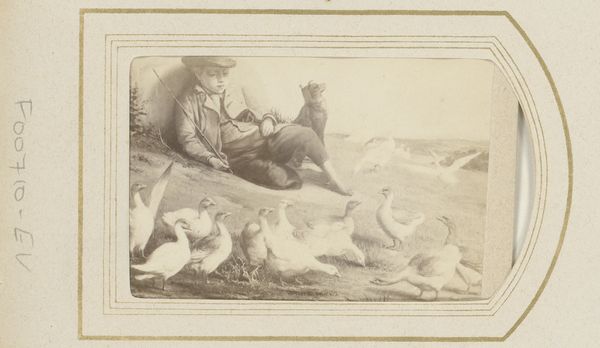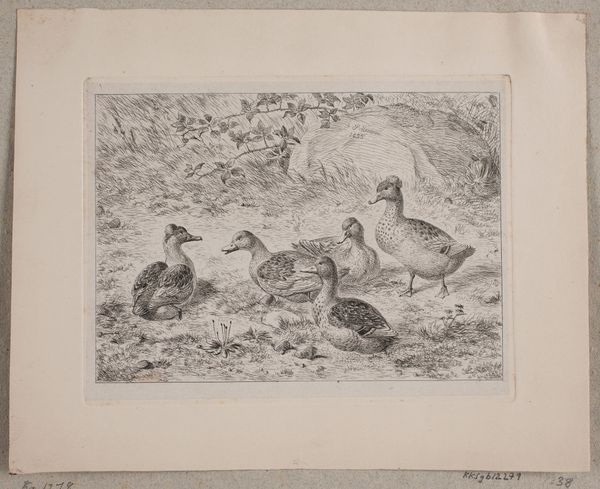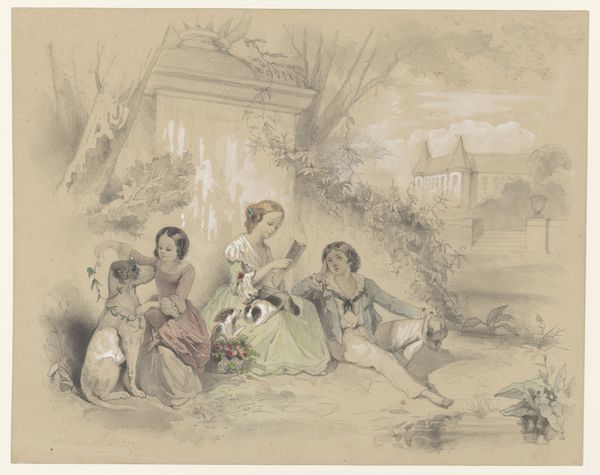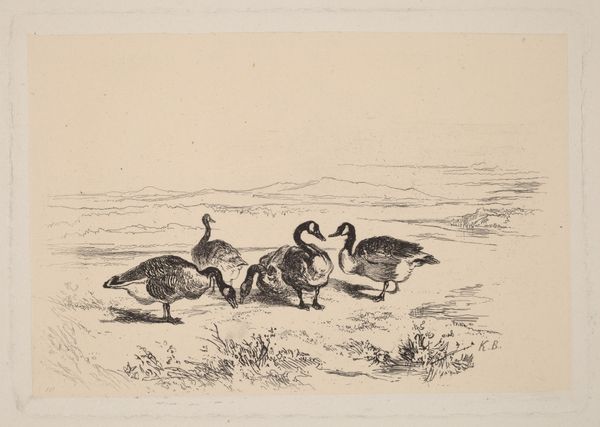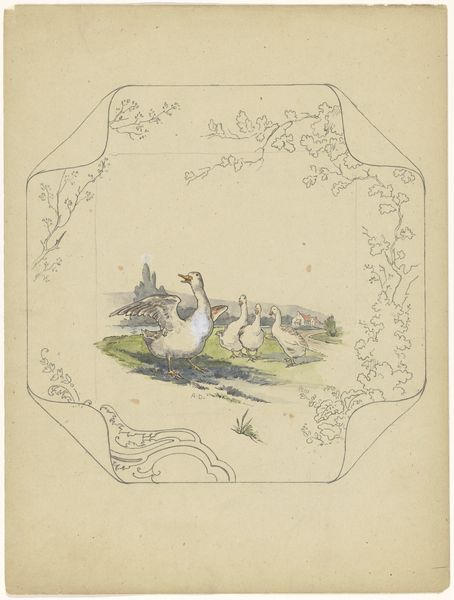
drawing, print, watercolor
#
drawing
#
water colours
# print
#
oil painting
#
watercolor
#
coloured pencil
#
watercolour illustration
#
watercolor
Dimensions: Image: 9 13/16 in. × 14 in. (24.9 × 35.5 cm) Sheet: 11 15/16 × 15 15/16 in. (30.4 × 40.5 cm)
Copyright: Public Domain
Editor: This chromolithograph, “Jolly Young Ducks,” was created in 1866 by Frances Flora Bond Palmer. It depicts a group of ducklings paddling in the water and, honestly, the scene feels incredibly idyllic and nostalgic. What social commentary might be embedded within this tranquil scene? Curator: Well, consider the period. 1866. Just after the American Civil War. These images, mass produced, circulated widely. Were they merely sentimental, or did they perform a kind of cultural work? Ask yourself, what ideologies are being reinforced here through the representation of nature and innocence? Editor: Hmm, so you're suggesting this image, while seemingly innocent, could be reinforcing certain societal values? The nuclear family maybe? Curator: Precisely. The image promotes an ideal—a peaceful, harmonious existence. But whose existence? Whose peace? During Reconstruction, for example, notions of idyllic domesticity often served to obscure the realities of racial and economic inequality, by reaffirming social order in the wake of violent unrest and deeply embedded segregation. How does this image participate in creating such a vision? Editor: So, instead of just seeing cute ducklings, we should be thinking about what this image might have been used to obscure, or even justify, during that period? A carefully crafted fiction used to reinforce harmful social structures? Curator: Exactly. It prompts us to question whose stories are being told and, more importantly, whose are being silenced. Consider the historical context of its creation and circulation. Who had access to these prints, and what messages were they receiving? It opens a dialogue about art’s role in shaping cultural narratives. Editor: I see your point. It's a reminder that art isn’t created in a vacuum, and even the seemingly innocent pieces can reflect broader societal issues and power dynamics. Curator: It is. Even "jolly" things, it turns out, can tell a complicated story about those not seen.
Comments
No comments
Be the first to comment and join the conversation on the ultimate creative platform.
